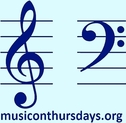Programme
Antonio Vivaldi (1678-1741) Sonata No 4 RV 45 in Bb major Largo - Allegro - Largo - Allegro Domenico Gabrielli (165?-1690) Ricercar No 3 in D major Francesco Geminiani (1687-1762) Sonata No 2 in D minor Largo - Presto - Adagio - Allegro Domenico Gabrielli Ricercar No 5 in C major Antonio Vivaldi Sonata No 2 RV 41 in F major Largo - allegro - Largo - Allegro ♫▬▬▬▬▬▬▬▬▬▬▬▬ Anna Tam

Anna Tam (b1983 London) has an eclectic career combining composition and performance both as cellist, viola da gamba player, and soprano (often at the same time). Her work extends from performing Bach’s solo suites on the baroque cello to composing for her group ‘Wake’; working with her duo partner Jonathan Musgrave on 20th century British works, to improvising with pianist and organist Ben Comeau.
Anna performed at the Wigmore Hall with a piano quintet aged 17 and at the Purcell Room whilst taking her undergraduate course at the Guildhall School of Music and Drama. In 2012 she played on BBC2’s ‘The Culture Show’ and gave the premiere of a previously undiscovered aria by Vivaldi on BBC1’s ‘Britain’s Hidden Heritage’. Last year she toured to North America playing viola da gamba and singing with the Mediaeval Baebes and to Africa with the Sydenham String Quartet. Her recent setting of James Joyce’s Chamber Music premiered in the Brighton Fringe Festival in May 2013 and has just had a second performance at the Old Red Lion Theatre this June to celebrate Bloomsday. More information and recordings are on her website www.annatam.co.uk |
Rialto Lounge will be selling sandwiches and drinks in the church after the concert. ♫▬▬▬▬▬▬▬▬▬▬▬▬▬▬ Graham Davies
Graham Davies received his early musical training at Winchester Cathedral where he assisted and was a pupil of Graham Matthews and Martin Neary.
Graham has held a number of important church appointments including Director of Music at Malvern Priory and Deputy Organist at Bath Abbey in 1994 where for seven years he was accompanist for the Abbey Girls’ Choir. In 2005 Graham was appointed to All Saints’ Clifton, in Bristol where he developed the music within an Anglo Catholic tradition, widening the repertoire and recruiting many new members to the choir. From 2005 to 2008 he was a regular accompanist for the Wells Cathedral Voluntary Choir. At this time he finished his business career to devote all his time to music. As well as being an organ recitalist, where Graham has given many concerts in churches and cathedrals throughout the UK, he has worked extensively as an accompanist with a variety of choirs, solo singers, and instrumentalists, most recently in vocal, flute, and cello duos on the harpsichord and organ. Graham is currently Organist of St. Mary the Virgin, Hayes, Middlesex. |
The Cairns 1984 Harpsichord
The one-manual harpsichord Graham Davies is playing was built in 1984 by Anthony Cairns, from a Sandy Rogers kit designed by Mark Stevenson. It is based on two original Italian harpsichords in the Victoria & Albert Museum dated 1521 and 1574. The light construction of Italian harpsichords gives them a vivid sound but a shorter reverberation time than Flemish, French or German harpsichords. This suited their function of accompanying voices and chamber groups, or playing dances.
The harpsichord is tuned to the Vallotti temperament (1754). The modern piano, with its pure tone, has all keys equally (slightly) out-of-tune. The bright tone of the harpsichord demands purer intervals, and meantone tuning (in pure thirds, e.g. C-E, with D halfway between them; G# to Eb was unbearable) was in general use until composers wanted to use remote keys like Ab, as well as usual keys like E. Vallotti's six perfectly tuned fifths from B, plus six tempered fifths from F, make harpsichord music sound acceptable in all keys.
Music on Thursdays are grateful to Anthony Cairns for the loan of the instrument for this concert.
The harpsichord is tuned to the Vallotti temperament (1754). The modern piano, with its pure tone, has all keys equally (slightly) out-of-tune. The bright tone of the harpsichord demands purer intervals, and meantone tuning (in pure thirds, e.g. C-E, with D halfway between them; G# to Eb was unbearable) was in general use until composers wanted to use remote keys like Ab, as well as usual keys like E. Vallotti's six perfectly tuned fifths from B, plus six tempered fifths from F, make harpsichord music sound acceptable in all keys.
Music on Thursdays are grateful to Anthony Cairns for the loan of the instrument for this concert.
Concert at Home
|
If you cannot be with us at the lunchtime concert
you can enjoy a similar Concert at Home by clicking the buttons below: |
While Matt Haimovitz's performance was given in an informal café concert setting, Josetxu Obregon's performance of this same work is in more usual concert surroundings.
Obregon plays a Baroque cello. |
|
Directions to
Leatherhead Methodist Church |












